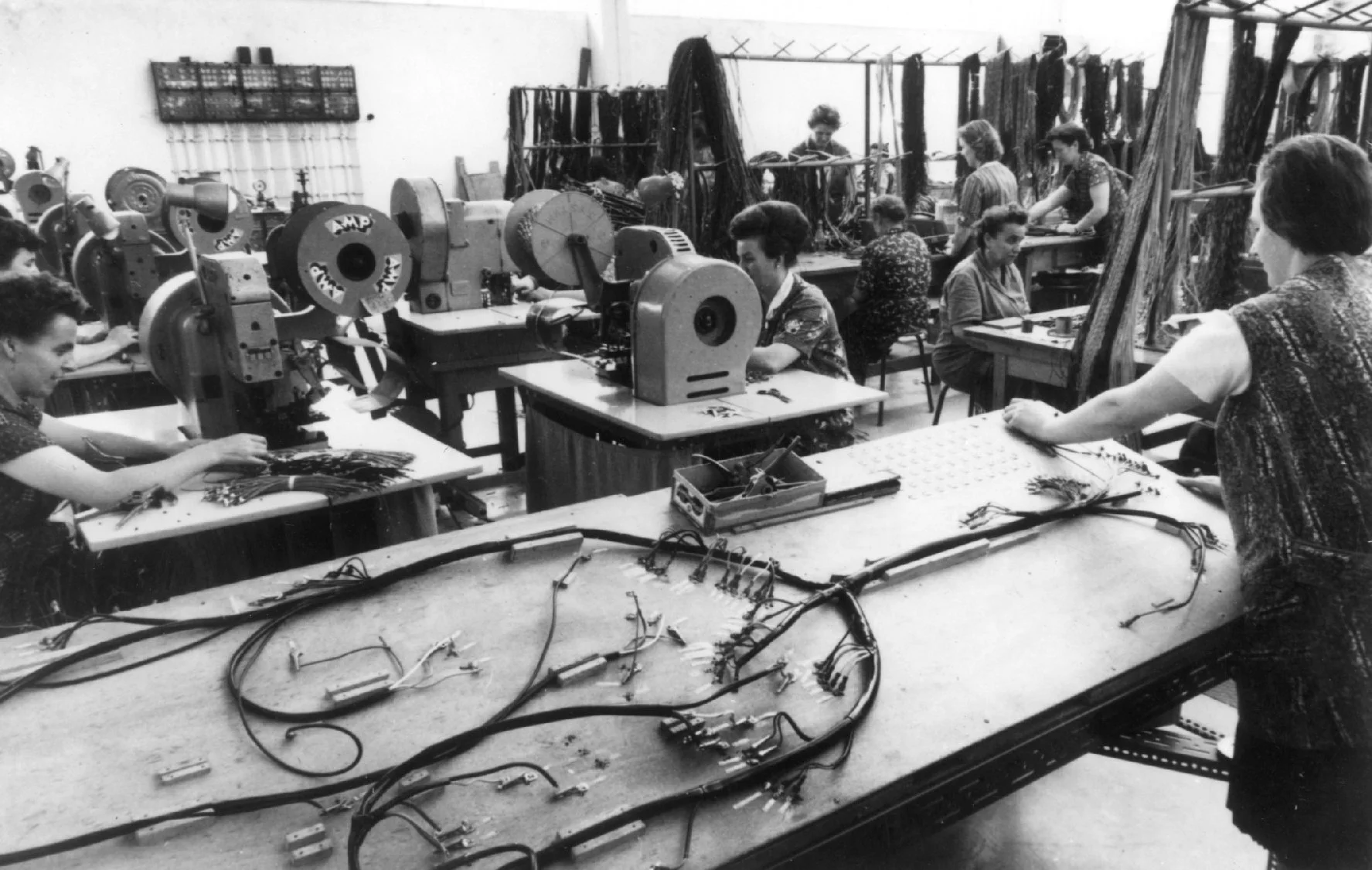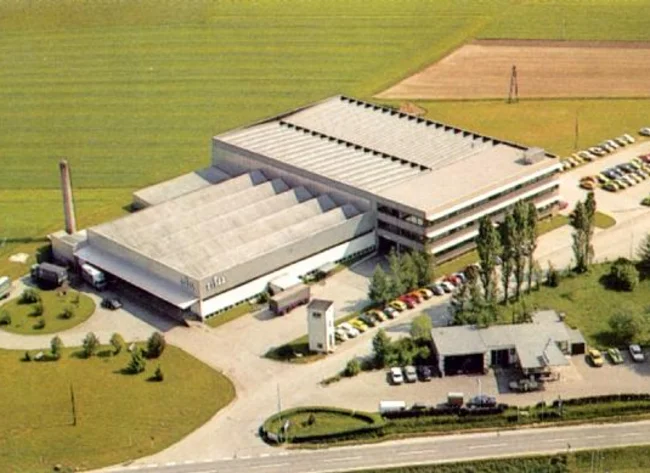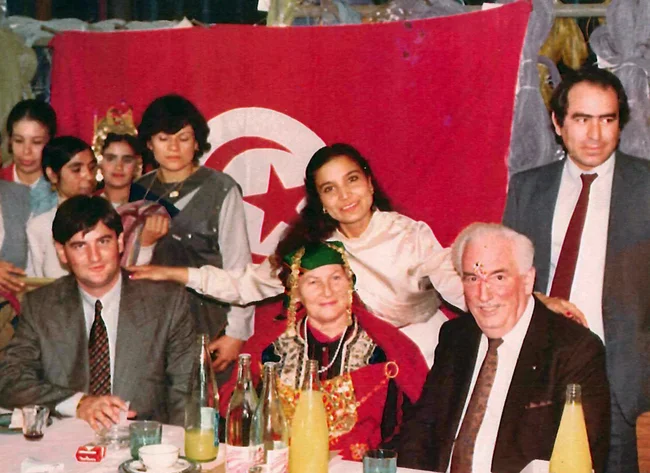About Goggos and dinner forks
The rise to a global company began at the time of the “German economic miracle” with a couple of electric cables for a microcar. On May 9, 1958, a letter from Dingolfing was received in Geisenhausen. It was sent by Hans Glas GmbH and was addressed to Fritz Dräxlmaier Sr.
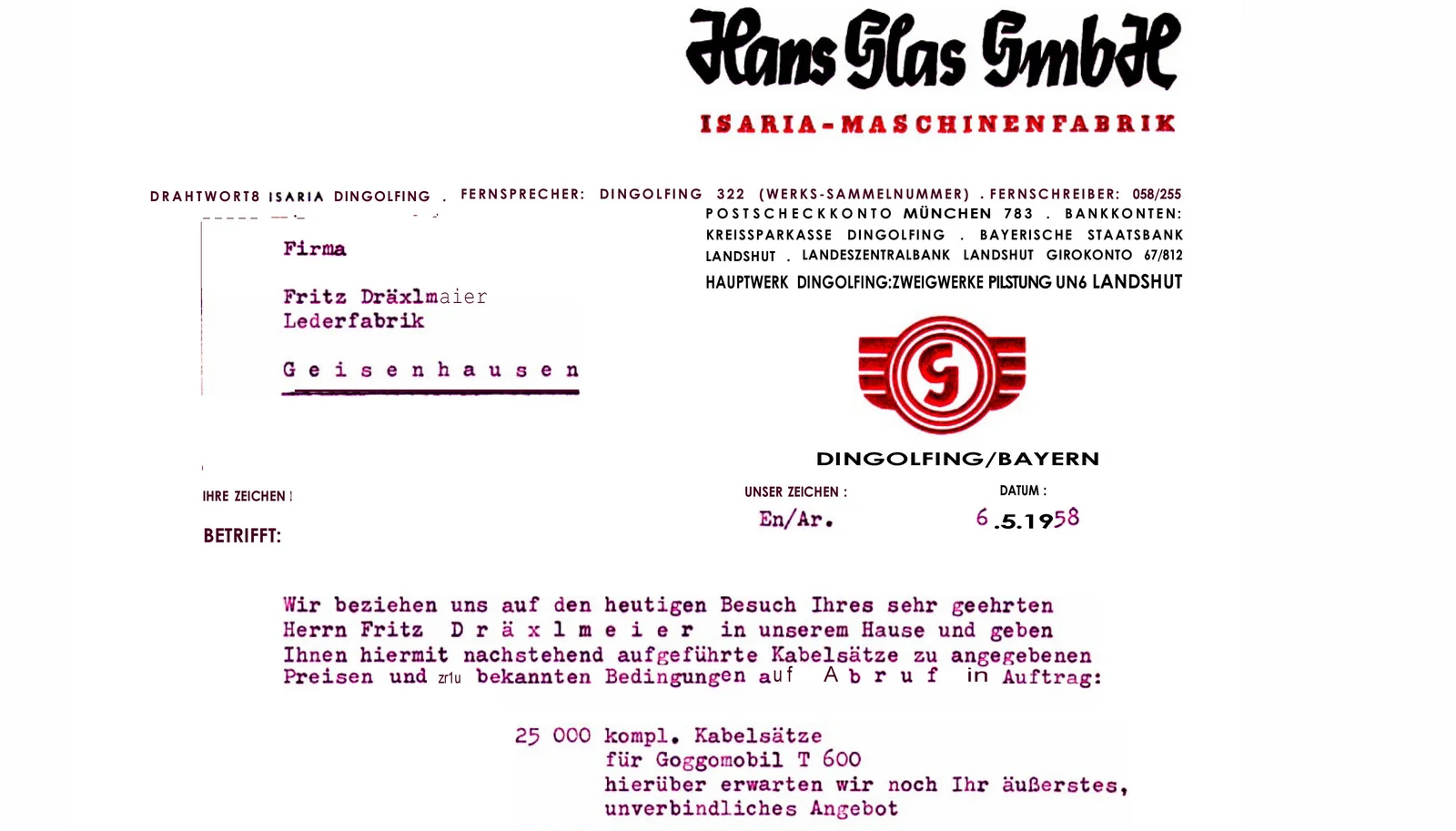
First wiring harnesses
This letter would decisively impact the history of DRÄXLMAIER because it contained the first order for more than 50,000 wiring harnesses for the new Goggomobil. in the letter, Hans Glas requested 50,000 wiring harnesses for the three different variants (T600, Coupe, and the Goggomobil limousine).
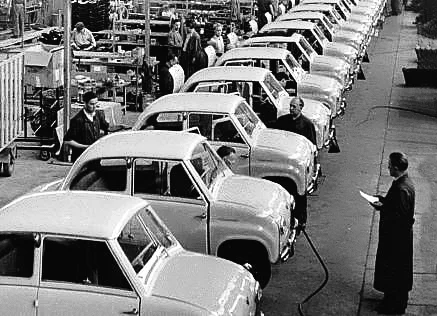
Founding ELDRA
With a lot of entrepreneurial valor and vision, Lisa and Fritz Dräxlmaier Sr. founded their new company, ELDRA, in order to fulfill this order. Time was pressing, since 100 wiring harnesses per day had to be delivered, starting June 15, 1958. With just five weeks to get ready, the lead time was beyond ambitious. The new company had neither a production site nor any employees, only a contract that obligated it to deliver. However, entrepreneurial experience helped.
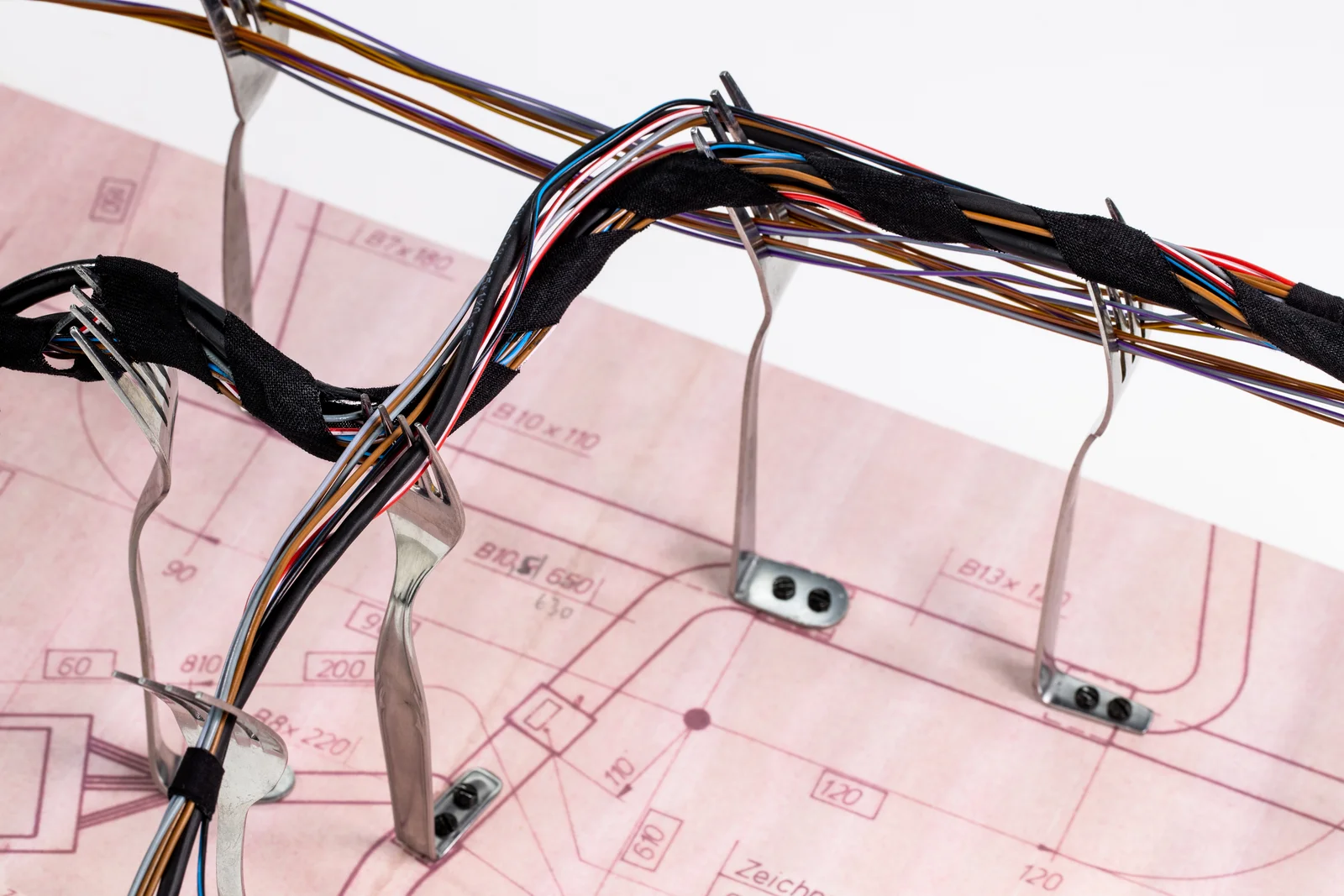
From the cutlery drawer
Quickly, Lisa and Fritz Dräxlmaier Sr. assembled a network of female homeworkers in Vilsbiburg in order to mitigate the lack of available workforce. Lisa Dräxlmaier thought about how the work could be simplified. She took dinner forks out of her kitchen drawer and mounted them on a board that had the assembly plan for the electrical system glued onto it. Today, these forks are made from nylon and are finely adjustable with assignment indicators and cable clamps—but they all descended from the forks in Lisa Dräxlmaier’s kitchen silverware drawer.
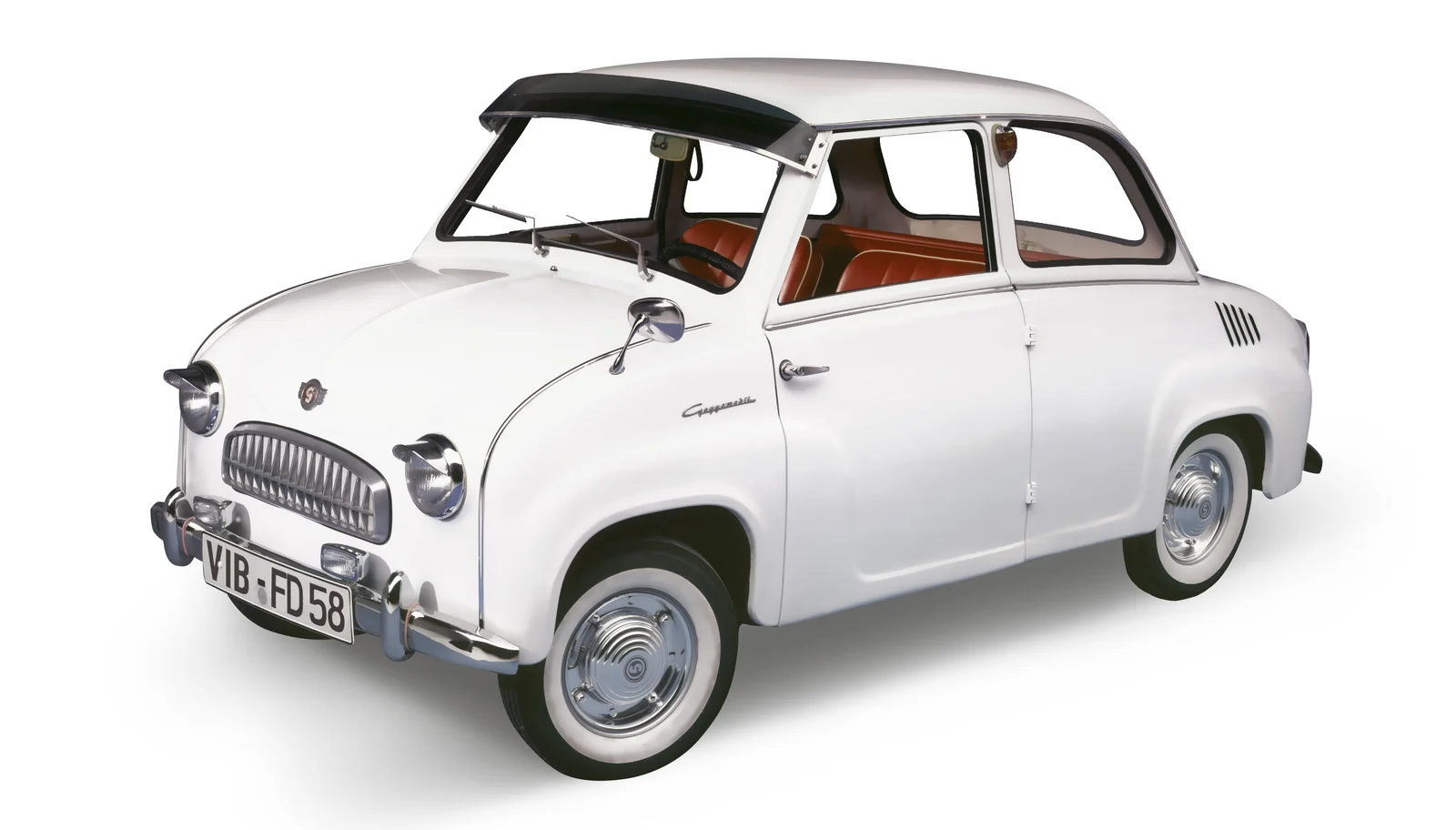
Moving onto interiors
Cable production had barely begun when the Dräxlmaiers expanded their product portfolio. In addition to the electrical systems, they also produced the Goggomobil’s door panel. This was the first step toward interior production.
